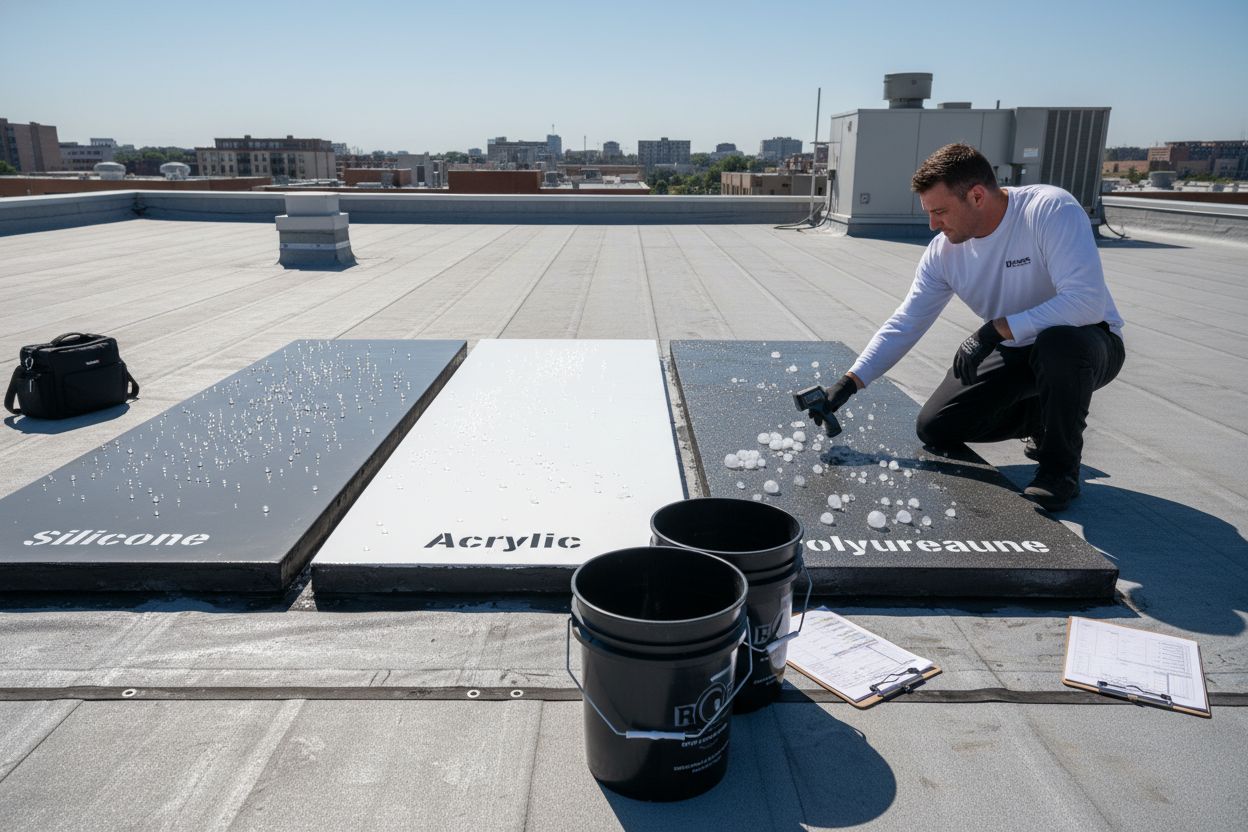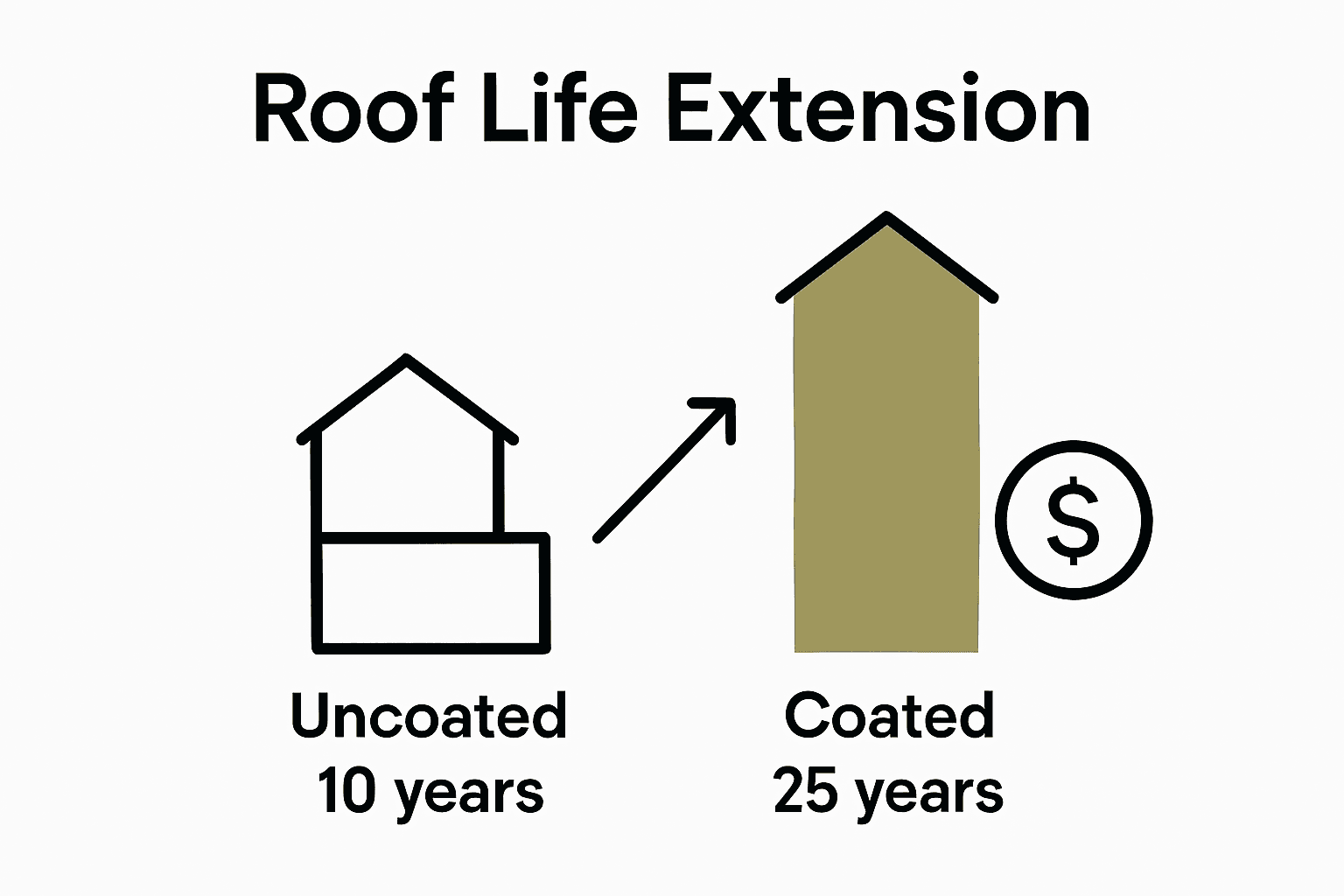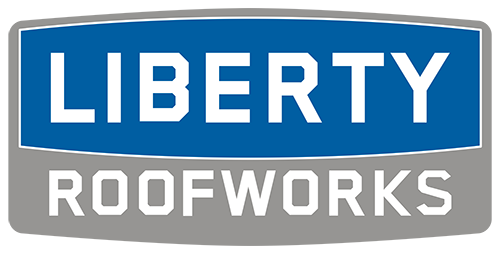Did you know that a properly applied roof coating can extend a roof’s service life by up to 25 years? Many homeowners and businesses face costly repairs due to sun, rain, and physical damage hurting their roofs year after year. Roof coatings offer a smart way to fight back, providing a seamless barrier against water, UV rays, and other threats while saving money on replacements and lowering energy costs.
Key Takeaways
| Point | Details |
|---|---|
| Roof Coatings Provide Essential Protection | They serve as a protective barrier against UV rays, water penetration, and physical damage, extending the roof’s lifespan. |
| Various Coating Types for Different Needs | Selection of coatings like acrylic, silicone, and polyurethane should match specific environmental challenges and property requirements. |
| Proper Application is Crucial | Successful application involves meticulous preparation and professional techniques to ensure long-term performance and durability. |
| Cost-Effective Long-Term Investment | While the initial costs are lower than full replacements, roof coatings can significantly reduce maintenance needs and extend roof service life by up to 25 years. |
Table of Contents
- Defining Roof Coatings And Their Purpose
- Types Of Roof Coatings And Their Distinctions
- How Roof Coatings Work In Protection
- Application Methods And Best Practices
- Cost, Longevity, And Common Mistakes
Defining Roof Coatings and Their Purpose
A roof coating is far more than just another layer of paint. According to Wikipedia’s technical definition, roof coatings are monolithic, fluid-applied membranes that serve as the critical topmost protective barrier for roofing systems. Think of them like a superhero shield for your roof – defending against nature’s most persistent attackers.
These specialized coatings come with remarkable protective features:
- UV resistance that prevents sun damage
- Waterproofing capabilities to block rain infiltration
- Impact protection against hail and physical damage
- Elastomeric properties allowing flexibility and movement
What sets roof coatings apart is their unique application method and performance characteristics. Unlike traditional roofing materials, these fluid-applied membranes can seamlessly cover existing surfaces, creating a continuous protective barrier. They’re typically much thinner than full roof replacements but deliver substantial protection. Learn more about our roof coating services at Liberty Roofworks to understand how we can extend your roof’s lifespan.
For homeowners and business owners alike, roof coatings represent a smart, cost-effective strategy for preserving roof integrity. By providing an additional layer of defense against environmental stress, these innovative solutions can dramatically extend a roof’s functional life, prevent potential water damage, and improve overall building energy efficiency.
Types of Roof Coatings and Their Distinctions
According to Wikipedia’s comprehensive research, roof coatings are not a one-size-fits-all solution. Different materials offer unique properties tailored for specific roofing challenges. Understanding these variations can help you select the most appropriate protection for your roof.
Primary Roof Coating Types
Here’s a comparison of primary roof coating types and their advantages:
| Coating Type | Key Benefits | Ideal Use Case |
|---|---|---|
| Acrylic | UV protection Reflectivity Cost-effective |
Hot, sunny climates |
| Silicone | Superior waterproofing UV resistance |
Areas with heavy rainfall |
| Polyurethane | High durability Impact resistance |
Hail-prone regions, flat roofs |
| Asphalt | Strong waterproofing Traditional option |
Older buildings, cost-sensitive repairs |
| Butyl | Excellent elongation Weathering performance |
Areas with wide temperature swings |
- Acrylic Coatings: Water-based, cost-effective, excellent for reflectivity and UV protection
- Silicone Coatings: Superior water resistance, ideal for regions with heavy rainfall
- Polyurethane Coatings: Exceptional durability and impact resistance
- Asphalt Coatings: Traditional option with strong waterproofing capabilities
- Butyl Coatings: Known for excellent elongation and weathering performance
Performance Characteristics
Each coating type brings distinct advantages. Polyurea coatings, for instance, offer remarkable abrasion resistance, while polyvinylidene fluoride provides exceptional chemical resistance. Check out our specialized roof coating services to understand which solution fits your specific roofing needs.
The key is matching the coating to your specific environmental challenges.
 Coastal areas might prioritize salt resistance, while urban environments might need higher UV protection. Professional assessment ensures you select a coating that not only protects but also extends your roof’s functional lifespan.
Coastal areas might prioritize salt resistance, while urban environments might need higher UV protection. Professional assessment ensures you select a coating that not only protects but also extends your roof’s functional lifespan.
How Roof Coatings Work in Protection
Roof coatings function as an advanced protective shield, operating through multiple strategic mechanisms to safeguard your building’s most critical structural component. Protective layering is their primary mission – creating an impenetrable barrier that defends against environmental challenges while enhancing overall roof performance.
Mechanical Protection Strategies
The protective process works through several key mechanisms:
- Surface Sealing: Filling microscopic cracks and preventing water penetration
- Reflective Blocking: Redirecting solar radiation and reducing heat absorption
- Expansion Protection: Allowing flexible movement during temperature fluctuations
- Damage Mitigation: Absorbing physical impacts from hail, debris, and environmental stress
Chemical and Environmental Defense
Beyond physical protection, roof coatings provide sophisticated chemical resistance. They create a chemically stable membrane that resists UV degradation, prevents oxidation, and maintains structural integrity over extended periods. Our comprehensive roof coating services can help you understand these intricate protective dynamics.
The ultimate goal of roof coatings is proactive preservation. By creating a seamless, responsive protective layer, they transform your roof from a passive structural element into an active defense system. This approach not only extends roof lifespan but also reduces long-term maintenance costs, making roof coatings a smart investment in building durability.
Application Methods and Best Practices
According to Roofing Contractor Magazine’s technical guidelines, successful roof coating application depends on meticulous preparation and precise execution. Surface preparation is the critical first step that determines the coating’s long-term performance and durability.
Preparation and Application Techniques
Three primary application methods exist for roof coatings:
- Brush Application: Best for small, detailed areas requiring precision
- Roller Application: Ideal for medium-sized surfaces and consistent coverage
- Airless Spray Application: Most efficient for large, uniform roof surfaces
Critical Application Considerations
- Ensure surface is clean, dry, and free from debris
- Check weather conditions – avoid application during extreme temperatures
- Do not thin coatings unless manufacturer specifically recommends
- Maintain proper coverage rates for optimal protection
Our professional roof coating experts understand that while small roofs might be suitable for DIY application, larger or complex roofing systems require specialized professional intervention. As Wikipedia notes, professional application ensures proper use of supplementary products for seams and addressing specific roof damage.
The difference between a good and exceptional roof coating often lies in the details of application. Professionals use specialized tools like pressure washers, precision spray equipment, and understand the nuanced requirements of different roofing materials – ensuring your roof receives the most effective protective treatment possible.
Cost, Longevity, and Common Mistakes
According to Wikipedia’s comprehensive research, roof coatings represent a strategic investment that can dramatically extend a roof’s service life by up to 25 years while simultaneously reducing roofing waste. Cost-effectiveness is not just about the initial investment, but the long-term preservation of your roofing infrastructure.
Financial and Performance Considerations
The economics of roof coatings break down into several key factors:

- Initial Investment: Typically lower than full roof replacement
- Maintenance Savings: Reduced repair and replacement frequency
- Energy Efficiency: Reflective coatings can lower cooling costs
- Extended Roof Life: Potential 25-year service life extension
Critical Mistakes to Avoid
- Applying coating over compromised roofing surfaces
- Neglecting proper surface preparation
- Choosing incorrect coating for specific roofing material
- DIY application without professional assessment
Warning signs demand professional intervention. Moisture problems can quickly escalate, especially when applying coatings over asphalt shingles without thorough evaluation. Our expert roof coating specialists can help you navigate these complex considerations.
Ultimately, roof coatings are not a universal solution but a targeted strategy. Understanding your specific roofing environment, material composition, and potential challenges determines the success of your coating investment. Professional assessment remains the most reliable path to maximizing your roof’s protective potential and financial efficiency.
Protect Your Roof With Solutions That Last
If you are concerned about roof damage, leaks, or rising energy bills, the right roof coating can make all the difference. The article highlighted how coatings offer real protection by fighting harsh UV rays, stopping water intrusion, and saving you money over time. However, many property owners make costly mistakes, from applying the wrong product to ignoring essential professional help. You want confidence that your roof is prepared for anything nature brings.
At Liberty Roofworks, we understand these challenges because we see them every day. Our expert team will assess your specific needs and recommend the best coating options based on your climate, roof material, and budget so you avoid those common pitfalls. Ready to extend your roof’s lifespan and avoid expensive surprises? See how our roofing expertise can work for you. Take the next step by scheduling a consultation through our main website and experience peace of mind knowing your building is protected for years to come.
Frequently Asked Questions
What are roof coatings and what purpose do they serve?
Roof coatings are fluid-applied membranes that act as a protective barrier for roofing systems. They guard against UV damage, water infiltration, physical impacts, and provide flexibility, thus extending the lifespan of roofs.
What types of roof coatings are available, and how do they differ?
The primary types of roof coatings include acrylic, silicone, polyurethane, asphalt, and butyl. Each offers unique benefits such as UV protection, waterproofing, durability, and elongation, suited for specific environmental challenges.
How do roof coatings protect against environmental conditions?
Roof coatings provide mechanical protection by sealing surfaces to prevent water penetration, reflecting solar radiation to reduce heat absorption, and ensuring flexibility during temperature changes. They also enhance chemical resistance to protect from UV degradation.
What are common mistakes to avoid when applying roof coatings?
Common mistakes include applying coatings over damaged roofing surfaces, neglecting proper surface preparation, using the incorrect type of coating for the roofing material, and attempting DIY applications without professional assessment. Proper application ensures effective protection.
